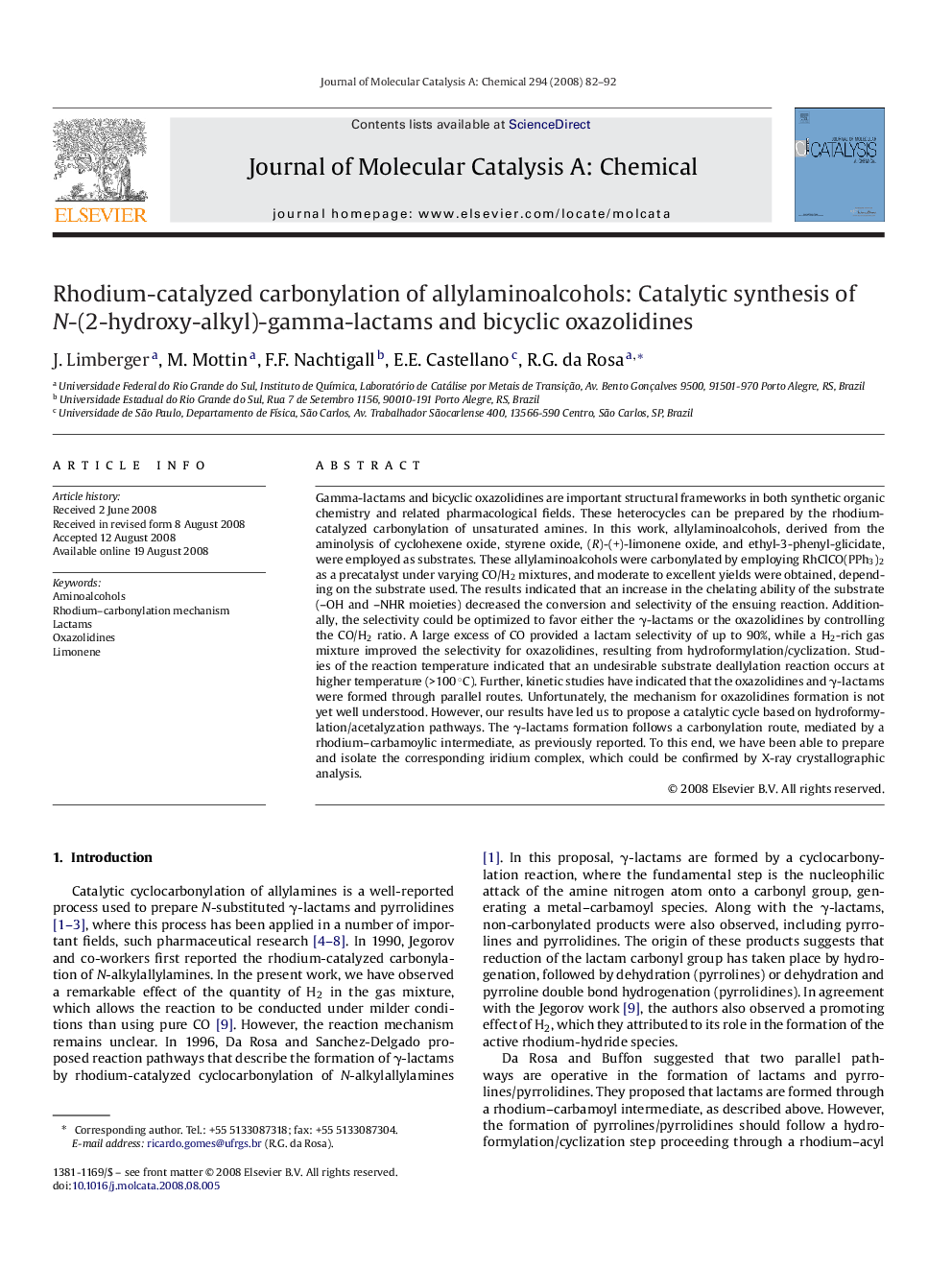| Article ID | Journal | Published Year | Pages | File Type |
|---|---|---|---|---|
| 67375 | Journal of Molecular Catalysis A: Chemical | 2008 | 11 Pages |
Gamma-lactams and bicyclic oxazolidines are important structural frameworks in both synthetic organic chemistry and related pharmacological fields. These heterocycles can be prepared by the rhodium-catalyzed carbonylation of unsaturated amines. In this work, allylaminoalcohols, derived from the aminolysis of cyclohexene oxide, styrene oxide, (R)-(+)-limonene oxide, and ethyl-3-phenyl-glicidate, were employed as substrates. These allylaminoalcohols were carbonylated by employing RhClCO(PPh3)2 as a precatalyst under varying CO/H2 mixtures, and moderate to excellent yields were obtained, depending on the substrate used. The results indicated that an increase in the chelating ability of the substrate (–OH and –NHR moieties) decreased the conversion and selectivity of the ensuing reaction. Additionally, the selectivity could be optimized to favor either the γ-lactams or the oxazolidines by controlling the CO/H2 ratio. A large excess of CO provided a lactam selectivity of up to 90%, while a H2-rich gas mixture improved the selectivity for oxazolidines, resulting from hydroformylation/cyclization. Studies of the reaction temperature indicated that an undesirable substrate deallylation reaction occurs at higher temperature (>100 °C). Further, kinetic studies have indicated that the oxazolidines and γ-lactams were formed through parallel routes. Unfortunately, the mechanism for oxazolidines formation is not yet well understood. However, our results have led us to propose a catalytic cycle based on hydroformylation/acetalyzation pathways. The γ-lactams formation follows a carbonylation route, mediated by a rhodium–carbamoylic intermediate, as previously reported. To this end, we have been able to prepare and isolate the corresponding iridium complex, which could be confirmed by X-ray crystallographic analysis.
Graphical abstractAllylaminoalcohols derived from cyclohexene oxide, styrene oxide, (R)-(+)-limonene oxide, and ethyl-3-phenyl-glicidate, were carbonylated using RhClCO(PPh3)2 as a precatalyst. Under these conditions, γ-lactams and oxazolidines were obtained as the principal products from cyclocarbonylation and hydroformylation pathways, respectively. Further, an iridium complex, analogous to the expected rhodium-intermediate in the cyclocarbonylation process, was isolated and its structure determined crystallographically.Figure optionsDownload full-size imageDownload as PowerPoint slide
